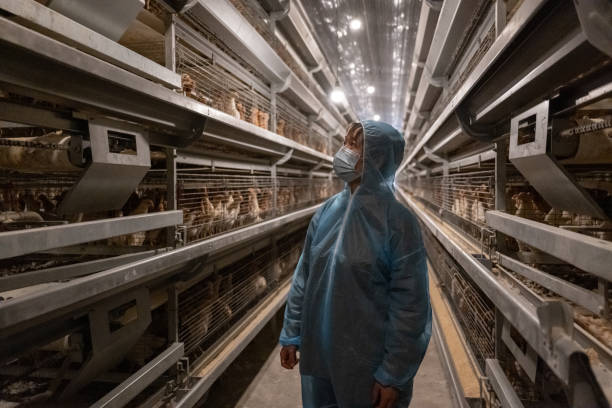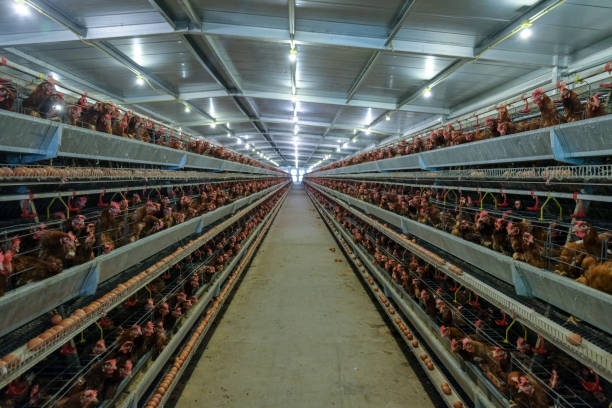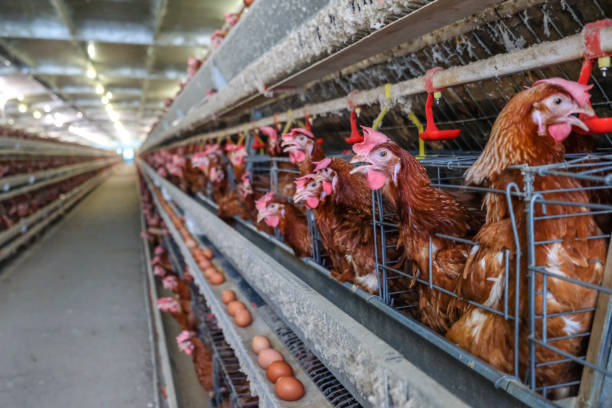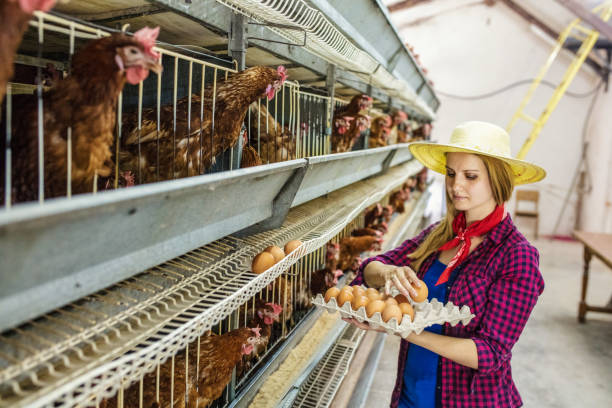
Layer Farming Business Plan in Pakistan: A Comprehensive Guide
Layer Farming Business Plan in Pakistan: A Comprehensive Guide
Pakistan’s agricultural sector plays a pivotal role in its economy, with poultry farming emerging as a significant contributor. Among the various segments within poultry, layer farming, which focuses on egg production, holds immense potential. This comprehensive guide aims to provide you with a detailed layer farming business plan specifically tailored for the Pakistani context, covering everything from initial planning to long-term sustainability.
Understanding the Landscape of Layer Farming in Pakistan
Before diving into the specifics of a business plan, it’s crucial to understand the current state of layer farming in Pakistan. The demand for eggs is consistently high, driven by population growth, increasing awareness of nutritional benefits, and affordability. However, the industry also faces challenges such as disease outbreaks, fluctuating feed prices, and access to financing.
Why Layer Farming in Pakistan Holds Promise:
High Demand: Eggs are a staple food, ensuring a steady market.
Relatively Short Investment Cycle: Compared to other agricultural ventures, layer farming offers quicker returns.
Government Support: The Pakistani government often provides subsidies and initiatives to encourage poultry farming.
Employment Generation: Layer farms can create numerous job opportunities, particularly in rural areas.
Developing Your Layer Farming Business Plan: A Step-by-Step Approach
A well-structured business plan is the cornerstone of any successful venture. Here’s a detailed breakdown of the key components:
Executive Summary:
This is a brief overview of your entire business plan, highlighting the key aspects such as your mission, goals, and strategies. It should be concise and compelling, grabbing the reader’s attention and summarizing the core elements of your proposed layer farming operation. Include:
A brief description of the layer farm (size, location, type of operation).
Your mission statement and key objectives.
A summary of your marketing and sales strategies.
Financial projections and funding requirements.
Company Description:
This section provides a detailed picture of your layer farming business, including its legal structure, location, and history (if applicable). It should establish the identity and purpose of your farm. Key information to include:
Legal Structure: (Sole Proprietorship, Partnership, Private Limited Company)
Farm Location: A clear description of the farm’s location and its suitability for layer farming (proximity to markets, access to infrastructure).
Business History: If you have any prior experience in farming or business, outline it here.
Mission Statement: A statement that defines your core purpose and values.
Goals and Objectives: Specific, measurable, achievable, relevant, and time-bound (SMART) goals for your farm.
Market Analysis:
A thorough market analysis is crucial to understanding the dynamics of the egg market in your region. This section should identify your target market, assess the competition, and analyze the prevailing market trends. Your analysis should paint a clear picture of the opportunities and challenges in the market. You should cover:
Target Market: Identify your ideal customer base (e.g., local markets, retailers, wholesalers, restaurants).
Market Size and Demand: Research the current egg consumption patterns in your region and estimate the potential demand.
Competition Analysis: Identify your main competitors and analyze their strengths and weaknesses. You should know their market share, pricing strategies, and distribution channels.
Market Trends: Stay informed about the latest trends in the egg market, such as consumer preferences for organic eggs or fortified eggs.
Pricing Strategy: Lay out how you will price your eggs competitively, ensuring profitability.
Products and Services:
This section describes the products and services you will offer. While the primary product is eggs, consider other potential revenue streams. You will describe the type of eggs you will produce, grading and packaging methods, and any additional services you will provide. Consider:
Egg Varieties: White, brown, or specialty eggs (e.g., organic, free-range).

Grading and Packaging: How you will grade the eggs based on size and quality, and what type of packaging you will use (e.g., cartons, trays).
Manure Management: Describe how you will manage chicken manure, as it can be sold as fertilizer.
Other Potential Products: Consider selling spent hens (after their laying cycle) or producing processed egg products.
Marketing and Sales Strategy:
A well-defined marketing and sales strategy is essential to reaching your target market and maximizing your sales. This section outlines how you will promote your eggs and build relationships with customers. Include:
Branding: Develop a unique brand name and logo for your farm.
Distribution Channels: How you will get your eggs to market (e.g., direct sales, wholesalers, retailers).
Promotional Activities: How you will advertise your eggs (e.g., local newspapers, social media, flyers).
Customer Relationship Management: How you will build and maintain relationships with your customers (e.g., loyalty programs, regular communication).
Operational Plan:
This section details the day-to-day operations of your layer farm, including the housing, feeding, and health management of your chickens. It is the heart of your business plan and demonstrates how you will run your farm efficiently. Including:
Housing: Describe the type of housing you will use (e.g., deep litter system, cage system, aviary system) in line with the Pakistan climate. Detail the size of the house and the space per bird.
Chicken Breed: Specify the breed of layer chickens you will raise (e.g., Lohmann Brown, Hy-Line Brown) and justify your choice.
Feeding: Outline your feeding program, including the type of feed, feeding frequency, and cost.
Watering: Describe your watering system to ensure a sufficient and clean water supply.
Health Management: Develop a comprehensive health management plan to prevent and control diseases, including vaccination schedules, biosecurity measures, and disease treatment protocols.
Waste Management: Explain how you will handle chicken manure and other waste products to minimize environmental impact and meet local regulations.
Egg Collection and Handling: Outline your procedures for collecting, cleaning, grading, and packaging eggs to maintain their quality.
Labor Requirements: Estimate the number of workers you will need and their roles.
Equipment and Supplies: List all the equipment and supplies you will need, such as feeders, drinkers, egg trays, and cleaning equipment.
Management Team:
This section introduces the individuals responsible for managing and operating the layer farm. Highlight their qualifications, experience, and roles within the organization. This will give investors or lenders confidence in your ability to execute the business plan. Include:
Organizational Structure: A chart showing the flow of authority and responsibility within the farm.
Key Personnel: Detailed resumes of the key managers and their relevant experience.
Advisory Board: If you have an advisory board, list its members and their expertise.
Financial Plan:
The financial plan is a critical component of your business plan, providing a detailed financial forecast for your layer farming operation. It should demonstrate the financial viability of your business and demonstrate to investors a clear path to profitability. Prepare:
Start-up Costs: List all the initial costs of setting up the farm, including land, construction, equipment, and chicks.

Working Capital: Estimate the amount of working capital you will need to cover operating expenses, such as feed, labor, and utilities.
Revenue Projections: Forecast your egg sales based on your estimated production and market prices.
Expense Projections: Estimate your operating expenses, including feed, labor, utilities, and health management.
Profit and Loss Statement: Project your income, expenses, and profits over a period of three to five years.
Cash Flow Statement: Project your cash inflows and outflows to ensure you have sufficient cash to meet your obligations.
Balance Sheet: Present a snapshot of your assets, liabilities, and equity at a specific point in time.
Funding Request: If you are seeking funding, specify the amount you need and how you plan to use it.
Break-Even Analysis: Determine the point at which your farm will start generating a profit by calculating the number of eggs you need to sell.
Appendix:

Include any supporting documents that are relevant to your business plan, such as market research reports, permits, licenses, and supplier agreements.
Specific Considerations for Layer Farming in Pakistan:
Climate: Pakistan’s climate varies significantly across regions. Choose breeds and housing systems that are suitable for your local climate. Hot weather can negatively impact egg production, so consider cooling strategies.
Disease Management: Pakistan faces challenges with poultry diseases such as Newcastle disease, avian influenza, and infectious bronchitis. Implement strict biosecurity measures and vaccination programs to protect your flock.
Feed Availability and Prices: Fluctuations in feed prices can significantly impact your profitability. Explore options such as contracting directly with feed suppliers or growing your own feed.
Financing: Access to financing can be a major hurdle for new layer farmers. Explore options such as government loan schemes, commercial bank loans, and microfinance institutions, such as Zarai Taraqiati Bank Limited (ZTBL).
Government Regulations: Familiarize yourself with the relevant government regulations and obtain the necessary permits and licenses. The Livestock and Dairy Development Department in your province can provide guidance.
Best Practices for Sustainable Layer Farming in Pakistan:
Biosecurity: Implement strict biosecurity measures to prevent disease outbreaks, including controlling access to the farm, disinfecting equipment, and providing foot baths.
Proper Ventilation: Adequate ventilation is crucial for maintaining air quality and preventing respiratory diseases.
Litter Management: If using a deep litter system, maintain proper litter management to prevent the buildup of ammonia and moisture.
Water Quality: Ensure a clean and reliable source of water for your chickens.
Lighting: Provide adequate lighting to stimulate egg production.
Record Keeping: Maintain accurate records of egg production, feed consumption, and health management to monitor your farm’s performance.
Conclusion
Layer farming in Pakistan presents a promising opportunity for entrepreneurs willing to invest the time and effort required to develop a comprehensive business plan. By carefully considering the market dynamics, operational requirements, and financial projections, you can create a sustainable and profitable layer farming business that contributes to Pakistan’s agricultural sector and provides nutritious eggs to consumers. Remember to stay informed about the latest industry trends, best practices, and government policies to ensure your long-term success. Building strong relationships with suppliers, customers, and industry experts will also be invaluable in navigating the challenges and opportunities in the dynamic world of layer farming. With dedication and a well-executed plan, you can create a thriving layer farm that benefits both you and the community.
